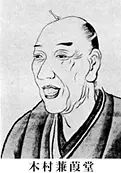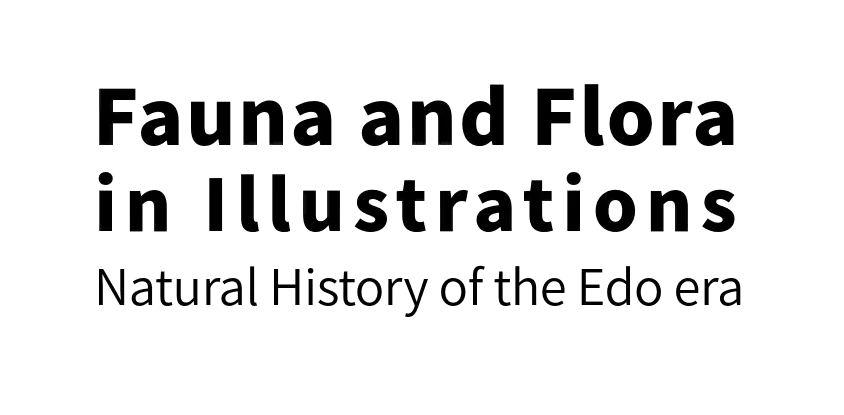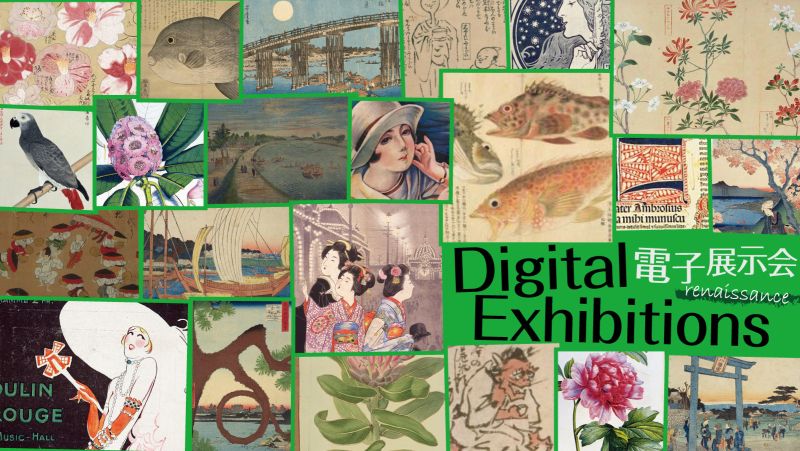
Natural History Circles in the Edo Period
Fauna and Flora in Illustrations: Natural History of the Edo era
As learning flourished, specialists emerged and amateur researchers were produced from all walks of life. In the late Edo period (1603-1867), natural history clubs also emerged. And, through such activities as reading sessions, study groups, and the lending and borrowing of books from the library, frequent exchanges of knowledge and insights into natural history took place.

Two of the most popular groups in the field of herbology were the Shaben-kai in Edo (Tokyo) and the Shohyaku-sha in Nagoya (Nagoya). Both Shaben and Shohyaku were taken from the actions of Shinno (the god of herbology), who used a red whip to strike and lick a hundred herbs.
The Shaben-kai was a group of daimyo (feudal lords) and hatamoto (bannermen), the main members of which were MAEDA Toshiyasu, BABA Chutatsu, MUSASHI Sekiju, IIMURO Shozaemon, SHIDARA Sadatomo, and SEKINE Untei. Its main activities were during the Tempo period (1830-44).
The Shohyaku-sha was a group of Owari clan warriors and doctors, and among its members were MIZUTANI Toyobumi, OKUBO Masaaki, and ITO Keisuke. The group was characterized by its close relationship with Philipp Franz von Siebold and its active attempts to incorporate Western knowledge. Although the exact date of establishment is unknown, the group was active for a long period of time from the Bunsei period (1818-1829) to the Meiji period (1868-1912).
In the field of mineralogy, there was the Roseki-sha, presided over by KINOUCHI Sekitei of Unkokushi. The company was active during the An'ei and Kansei periods (1772-1801).
Furthermore, academic exchanges beyond master-disciple, peer, and peer associations became more active and product meetings were held. This was a movement to look at the actual objects of research, not just the literature.
In Edo, the first pharmaceutical exhibition in Japan was held in Yushima in 1757 under the auspices of HIRAGA Gennai with his teacher, TAMURA Ransui, as the chairman of the association. This pharmaceutical exhibition was held every year, but due to the nature of the exhibits, which dealt with plants, animals, and other living creatures, the duration of the exhibition was short and the number of exhibits was not very large.
In Osaka, the first pharmaceutical exhibition was held in Kansai in 1760 by TODA Kyokuzan. The Bunkairoku is a record of the exhibits at the exhibition. The Bunkairoku was groundbreaking in that it was illustrated and edited to show the actual products to people with similar interests in various regions.
In 1762, the Toto pharmaceutical exhibition in Edo established 30 branches to systematically collect exhibits from all over the country. This was a major departure from the study group style of a peer-to-peer organization, and the network extended throughout the country.
Similarly in Kyoto and Nagoya, we can see a trend from rotating exhibitions to specific venues, from irregular to regular, and from members-only to being open to the public.
Thus, natural history circles of various sizes formed concentric circles each region.
One of the key figures of these natural history circles was KIMURA Kenkado. He studied herbalism under TSUSHIMA Joran and ONO Ranzan, was friends with TAMURA Ransui and TODA Kyokuzan, and exhibited at medicine and product fairs in Edo and Osaka. It is noteworthy that he opened his own library, Kenkado, to the public and made his collection of materials available to those who cared to look at them. By having a permanent facility, the natural history circle finally had a role similar to that of a museum today. The scope of his circle was extensive, and the Kenkado became a salon for naturalists not only from his hometown of Osaka, but also from throughout Japan.

